Selecting the New Seven Wonders of the World began as a Millennium project, initiated in 2000 to commemorate the coming of the 21st century. The project was led by Canadian-Swiss Bernard Weber and together with the New7Wonders Foundation, Weber conducted a popularity poll from a selection of 200 existing structures.
In a press release issued by the New7Wonders Foundation, the list was decided by more than 100 million votes from around the world, casted though internet votes or by direct telephone calls to the foundation. Since each person can cast multiple votes via telephone or create multiple identities to vote online repeatedly, the results could have been manipulated. Nonetheless, the poll was still considered as the “largest poll on record.”
S0 after seven years of gathering votes, the winners of the poll were announced in Lisbon on July 7, 2007. The New Seven Wonders of the World are as follows:
Taj Mahal (ताज महल)

Location: Agra, Uttar Pradesh, India
Year: 1632AD
The Taj Mahal (which translates to “crown of palaces” or “crown palace” in English) is a mausoleum built by the Mughal emperor of India, Shah Jahan, in Memory of his third wife, Mumtaz Majal. This white marble structure is regarded as the finest example of how the combination of various architectural styles can result in a masterpiece that transcends beyond cultures and influences. The Taj Mahal is one of the most respected and admired heritage sites in the world; admitted as an UNESCO World Heritage Site in 1983.
Apart from the most prominent component of the Taj Mahal, the white marble dome, the mausoleum is actually composed of other imposing structures. It took more than 21 years with thousands of craftsmen and artisans to finish Mumtaz Majal’s memorial. The Taj Mahal was completed in 1653 through the hard work of an imperial board of architects hand-picked by Shah Jahan.
Chichen Itza (Chi’ch’èen Ìitsha’)
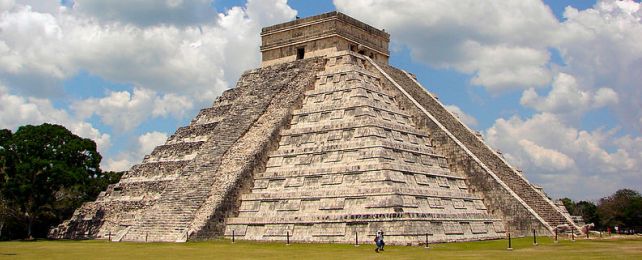
Location: Yucatán, Mexico
Year: 800AD
Chichen Itza (which can be loosely translated to mean “the mouth of the well of the Itza”) is the name of the pre-Columbian city built by the great Mayan civilization around 800 AD. The city is located in the heart of Tinum, a Yucatán state in Mexico. This archaeological site contributed much of what we now about the Mayans today. During its peak, Chichen Itza was the center of trade and commerce of the northern lowlands.
The city combines different architectural styles, though most of these styles are reminiscent of the ones prevalent in central Mexico. In the past, it was believed that the Mexican influence to Maya’s architectural styles was a result of Mexican conquest. However, more recent views see these influences as a product of cultural diffusion that probably resulted from trade and commerce.
The land where the ruins are located actually used to be privately owned. But in 2010, the state of Yucatán purchased the property and gave its stewardship to the National Institute of Anthropology and History. Today, Chichen Itza receives at least 1.2 million tourists each year.
Christ the Redeemer (O Cristo Redentor)
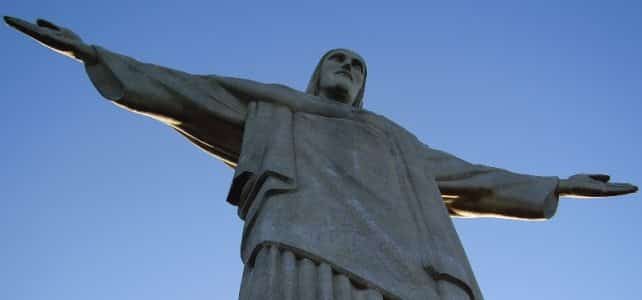
Location: Rio de Janeiro, Brazil
Year: 1926AD
Standing at 30 metres tall, Christ the Redeemer is considered to be the largest statue in the world showcasing the Art Deco style. Christ the Redeemer is the largest statue of Jesus Christ in the pre-dominantly Christian nation of Brazil. Its arm span measures around 28 meters across. However, when in the world arena, the statue only comes second to the Christ the King statue in Poland, which stands at 33 meters.
The construction of Christ the Redeemer began sometime in 1922. After almost nine years and about 635 tons of soapstone and reinforced concrete, the statue was finally completed in 1931.
From a collection of designs, local engineer Heitor da Silva Costa’s art deco representation of Jesus holding His hands wide open to symbolize peace was chosen. Paul Landowski, a famous Polish-French sculptor, was then commissioned to realise the concept along with Albert Caquot, who designed the reinforced concrete used in the construction.
A total of $ 250,000 (or an equivalent $3,200,000 in 2013) was spent on the monument, with the construction fully funded by donations predominantly made by the Catholics in Brazil.
Colosseum (Colosseo)
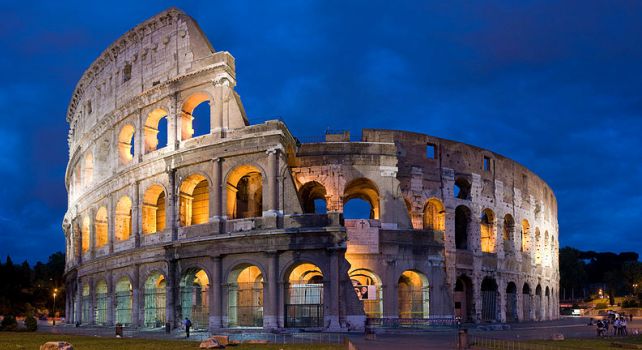
Location: Rome, Italy
Year: 70AD
Nearly 20 centuries later, the Colosseum (or the Flavian Amphitheatre) built in Rome around 70 AD, still remains the largest amphitheatre in the world. The Colosseum is estimated to hold about 80,000 spectators and was used by the great Roman Empire to host gladiatorial competitions and other spectacles; like public executions or dramas based on battles and mythologies.
The Colosseum is believed to be the greatest piece of Roman architecture and engineering; built from a mixture of stone and concrete and taking a decade to complete. The construction was initiated by the Roman Emperor Vespasian but it was during the reign of his heir Titus that the Colosseum finally reached its completion. The Colosseum was further developed and modified by Titus’ successor, Domitian.
In 1980, the Colosseum along with the other iconic sites in Europe; like the “Basilica of Saint Paul Outside the Walls” and the properties of the Holy See, were admitted into UNESCO’s list of World Heritage Sites.
Great Wall of China (Wànlǐ Chángchéng)

Location: China
Year: 700BC
The Great Wall of China is undoubtedly the most famous tourist attraction in the country, drawing in millions of tourists into China year after year. This is very ironic to the purpose why The Great Wall was built though. Originally, The Great Wall was constructed in order to keep the nomads from coming into Chinese territory. Through a series of fortifications made from different construction materials like stone, wood and tamped earth, the Chinese Empire has emerged as one of the most impenetrable empires in the east.
The wall took centuries to finish, with each ruling emperor adding more length and breadth into the structure. However, the most prominent portions of the wall were those built during the reign of Qin Shi Huang, who ruled as emperor of China from 220-206 BC. Extensive enhancement and reconstruction projects were also made during the reign of the Ming Dynasty.
As a defensive structure, the Wall has thousands of watch towers spread along its entire length. Troop barracks and garrison stations are also strategically spaced apart. But apart from guarding Chinese territories, the wall also became a means for the Chinese authorities to control trade and commerce. Goods and products coming in to China would have to pass through the wall where tax and other trade obligations can be easily imposed. The wall also gave the government more power in controlling emigration and immigration.
If the entire Great Wall is measured from edge to edge, including all its branches, the numbers easily swell up to 21,196 kilometres.
Machu Picchu (Machu Pikchu)

Location: Cuzco Region, Peru
Year: 1438AD
Machu Picchu (or Machu Mikchu), which literally means “old peak” in Quenchua language, is an Incan settlement built atop a mountain ridge 80 kilometres northwest of Cusco. It is located just above the Sacred Valley, another famous Incan settlement in the Andes, Peru. It is a popular belief among archaeologists that Machu Picchu might have been the estate of the great Inca emperor Pachacuti, who died sometime in 1472.
Pachacuti’s estate was built around 1450 and was about a century old when it was abandoned because of Spanish conquest. This archaeological site returned to fame when Hiram Bingham, an American historian who studied Machu Picchu, introduced it to the public in 1911.
Since its unveiling, Machu Picchu has become one of the world’s most popular tourist attraction in the world. In 1976, about 30% of the entire estate was restored to how it originally looked like. Efforts to restore the whole estate continue even today. It was admitted in the list of UNESCO World Heritage Sites 2 years after it was declared a “Peruvian Historical Sanctuary” in 1981.
Petra (البتراء)
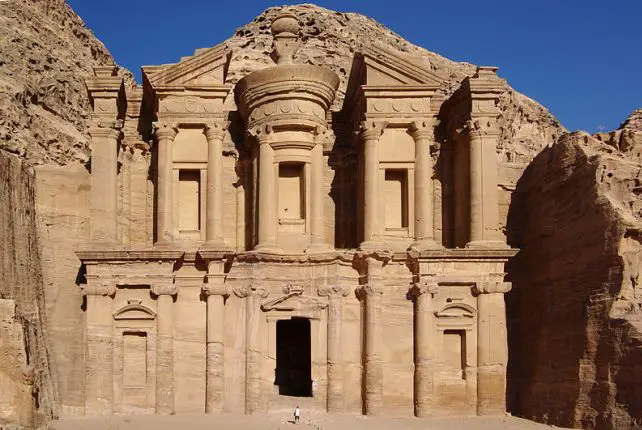
Location: Ma’an Governorate, Jordan
Year: 312BC
Petra is a beautiful archaeological city established in southern Jordan in 312 BC. Petra served as the capital of the Nabateans, the ancient people who were known to be one of the earliest inhabitants of Southern Levant.
Petra is a collection of structures carved out from a rock mountain; also known as the ‘Rose City’ because the rock from which it is carved from is coloured pinkish-red. Because of its intricacy and breath-taking beauty, Petra was chosen by the governorate of Ma’an to become the symbol of Jordan.
Some say that the mountain from which Petra is carved from lies along the slopes of the biblical mountain Hor (now called Jebel al-Madhbah in Jordan). This is the same mountain range which runs from the Gulf of Aqaba to the Dead Sea.
Petra was declared as an UNESCO World Heritage Site in 1985 and since then has become one of the world’s most heavily-visited tourist destinations.












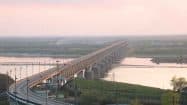




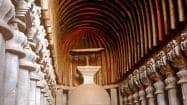





![Big Spender To Backpackers [infographic]](https://www.holidaypoint.com.au/wp-content/uploads/2014/03/GIO_BigSpendertoBackpacker_v3-e1394504863732-187x105.jpg)


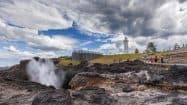
![For The Love Of Bbq [infographic]](https://www.holidaypoint.com.au/wp-content/uploads/2014/01/GIO_AussieBBQ_v2-e1390559463404-187x105.jpg)

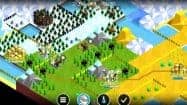


![Cities Of The Future [infographic]](https://www.holidaypoint.com.au/wp-content/uploads/2013/11/geek-travel2-e1384167225628-187x105.jpg)










Do You Have a Question to Ask?